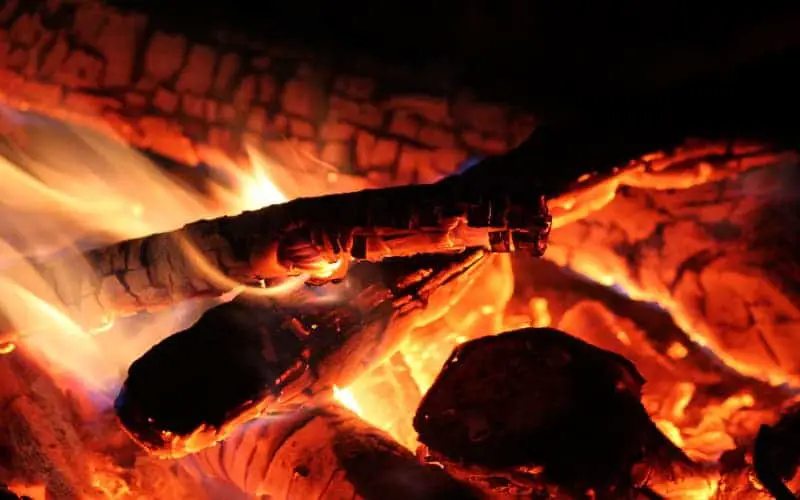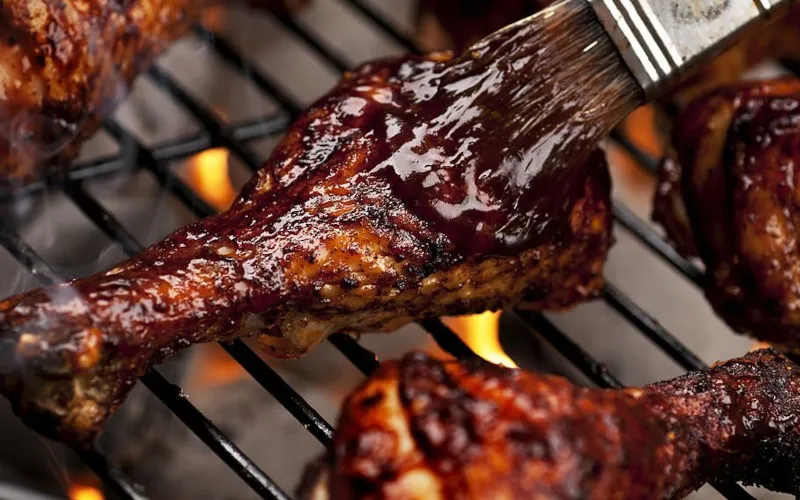Have you noticed the difference between various beef cuts? Although some people might not pay attention to the difference in the beef cuts, the differences may guide a consumer when buying the meat which meets their preference.
For instance, you may consider the beef cut’s tenderness, presence of fat, leanness, and the ability to marble. The type of cooking may also guide a buyer when buying the meat from the store. The Delmonico vs Ribeye comparison shows the cuts are almost similar but have key differences. Thus, you should know the differences when buying the cuts to find the one which meets your appetite.
What is a Delmonico Steak?
The Delmonico steak is a beef cut and is derived from the anterior up to the cow’s posterior. The cut has gained popularity over the centuries as it gets its name from the 18th century Delmonico restaurant which sold this specific cut in New York.
You will find boneless Delmonico steak and some cuts with bones. If you enjoy your meat with the bones, this cut will meet your needs. The cut is tough chewy and grainy and is one of the texturized meats.
You will easily find the Delmonico steak at the butcher’s shop; you should source your cut from fresh farms.
The Delmonico steak is a healthy cut and does not have too much fat which increases the calories on your plate. Thus might be suitable for people on a strict diet, moreover, the meat is lean and would meet your dietary needs.
Although it may not have the fat layers, it offers the marbling effect and the beefy taste you would be looking for in your cuts.
What is a Ribeye Steak?
The ribeye steak is derived from the primal section of the cow and some people might call it the beef rib. The cut falls between the shoulder and the loin between ribs six and twelve. The cut has bones that come from the rib cage.
Although the ribeye is tender and lean it is smooth and juicy and offers the marbling effect during grilling. However, when the Ribeye steak cut is sold at the butcher’s office it comes without the bones, making it ideal for grilling.
You would go for the ribeye cut when seeking the beefy outcome. You may cut the ribeye steak into smaller portions to serve it to many people.
What is the Difference Between Delmonico and Ribeye Steak?
Location
The location of the Delmonico and ribeye steaks vary, and the cuts might help differentiate the meats. For instance, the Delmonico steak comes from the cow’s loin; the loin is close to the back. However, you may derive it from the cow’s chuck; this is the front area of the cow.
If you are slaughtering the cow at home, you would be careful carving out the meat from the specific areas to get the right Delmonico steak cut.
On the other hand, ribeye steak comes from the cow’s ribs, but will not contain the bones of the ribs, it is carved from the muscles of the neck and the hind parts of your cow. Thus, the cut is tender and juicy ideal for BBQ.
Taste
The taste between the Delmonico and ribeye steaks varies due to the difference in tenderness, leanness, and availability of fat on the meat. For instance, since Delmonico cut is grainy, and highly textured it will be less juicy. The meat is tough and might have lower calories making it ideal for people on a weight loss journey due to less saturated fat.
You may choose the Delmonico cut with bones as it adds flavor to the meat, or choose the boneless meat as it is cooked.
On the other hand, the ribeye cut is juicy tender, soft, and ideal for making burgers and humbuggers. This might be the ideal cut when looking for the marbling and beefy taste. The muscle on the cow’s neck contains a lot of fat and might be ideal for BBQ lovers.
Price
Delmonico steak is cheap and is among the cheapest beef cuts, this might be due to the chewy and lean structure. Sometimes, its price will vary from one store to another but it will always be cheaper than the ribeye steak cut.
Ribeye is ideal for BBQ; this might explain its high price. You may find the ribeye steak being twice the price of the Delmonico steak in some stores in the US.
Bones
Sometimes the presence or absence of bones in your meat determines the cut you choose. You will consider the Delmonico steak if you want a cut with some bones. However, you will still find the boneless Delmonico steak, you may specify to the butcher if you want the meat with the bones or not.
Although the Ribeye is derived from around the ribs, it does not contain bones. You will go for this boneless treat and slice it into tiny pieces which can feed a large crowd or convert it into burgers and BBQ strip steaks.
Fats
Although the Delmonico steak is chewy and hard it has some fat deposits; you may cut the fats from the steak before grilling. The meat is chewy and hard and the little fats will increase marbling and the beefy taste.
On the hand, ribeye steak is juicy, tender, and easy to cook. However, it does not have the fat deposits in the steak; but will have a meaty flavor due to the tenderness.
Steak Types
These cuts might be divided into different small cuts depending on the exact area it is taken from. The Delmonico steak has nine parts and you may choose any specific part from the butcher’s office. The parts have different tenderness, and textures, and knowing them by name will help you find the ideal cut for your family.
On the other hand, ribeye might be divided into two parts depending on the meat amount they contain. A ribeye derived from a well-fed steer will have enough meat which can be divided into two parts.
Alternative Names
Sometimes your online shop or butcher might use alternative names for the cuts, knowing these alternative names will help you find the right. For instance, the Delmonico steak gets its name from the 18th mid-century New York restaurant.
However, some butchers and online stores might call it the New York Steak, Kansas City Strip Steak, boneless club steak, strip loin, and boneless loin. On the other hand, ribeye gets its name from the part of the cow it is derived from; it comes from the rib region.
Food Additives
Sometimes you may need food additives to cook different beef cuts; the Delmonico steak is hardy and will need to marinate to cook it effectively. Moreover, apple cider vinegar might make the hardy steak soft. Ribeye is naturally flavored and you may not need any additives to soften or add flavor.
Number of Ends
The Delmonico steak does not have ends as it is a large meat junk. On the other hand, the ribeye steak has two ends; the short loin and the chuck.
| Comparison | Delmonico Steak | Ribeye Steak |
|---|---|---|
| Location | Various parts of the cow | From the cow’s rib |
| Taste | Tough and hardy | Tender, juicy, and smooth |
| Price | Cheaper | More expensive |
| Bones | Boneless or with bones | With bones |
| Fats | Has fat but you can remove the layer | Has fat layers |
| Names | Gets its name from the 18th century New York restaurant | Gets its name from the cow’s ribs |
| Types | Has nine beef cuts | Has two types of cuts |
| Alternative Names | Delmonico steak, New York steak, boneless loin, boneless club steak, strip loin, Kansas City Steak | Ribeye Steak |
| Number of Ends | Has no ends | Has two ends |
| Food Additives | Needs vinegar | Does not need food additives |
Delmonico vs Ribeye: Which is Better?
Choosing the better beef cut between the Delmonico and ribeye steak might be challenging as both cuts are different. For instance, you may go for the Delmonico steak if you don’t have enough money to pay for expensive beef cuts.
The cut might be cheaper than the ribeye cut in almost all restaurants; the ribeye steak might be twice the price of the Delmonico steak. Unfortunately with the low price, you will get hardy meat that is chewy and might require effective cooking skills. You would add additives such as vinegar to soften your Delmonico steak, and the cut might lack the beefy taste typical in other beef cuts.
On the other hand, you would choose the Ribeye steak if the meat price is not a concern as it is always more expensive than the Delmonico steak. The steak offers the marbling effect, is tender, and has a beefy taste. The Ribeye cut might feed a lot of people depending on the size of the cut.
Frequently Asked Questions
Is Delmonico a Good Cut of Steak?
Delmonico steak is a good stick and you can choose this cut over other beef cuts in the butcher’s shop. Although it is hardy and chewy, it is lean meat with few calories and would be ideal for people on a dietary plan. Moreover, it is cheap and will not leave an impact on your pocket, it might be half the price of the ribeye steak.
How Many Delmonico Steaks in a Cow?
The cow has nine Delmonico steaks as the cut comes from a large part of the cow. It might be better to understand each cut to get the right meat from the butcher. All these cuts have different leanness, fat, and connective tissues and one cut might not have a similar consistency to another.
How to Grill Delmonico Steak?
You can quickly grill the Delmonico steak by preheating your oven to 250 degrees Fahrenheit for about ten minutes before placing the meat on the grill. You will need to marinate the Delmonico steak to reduce the hardiness; vinegar might soften the meat making it easy to cook and break the connective tissues.
Without marinating, the Delmonico steak would remain chewy and undesirable for most people. You should ensure the Delmonico steak’s internal temperature is at 350 degrees Fahrenheit and let it cook for three hours. You may serve the Delmonico steak with mashed potatoes, stir fry vegetables, and other food which you love.
How Long To Grill Delmonico steak Medium Rare?
The medium-rare Delmonico steak requires a few minutes to achieve the rare medium. You will lightly oil the grates and sear the Delmonico steak for three to five minutes depending on the steak thickness. Then rotate the Delmonico steak on the other side and continue searing for another three to five minutes.
After attaining the grill marks, you may flip the Delmonico steak and cook each side for about ten minutes to achieve the medium-rare.
Are Delmonico Steaks Good For Grilling?
The Delmonico steak is suitable for grilling as the thickness allows the steak to cook well on the grill. The thin steak will cook within a short time, but if the Delmonico steak is thick, you would increase the cooking time.
Are Delmonico Steaks Tender?
The Delmonico steaks are not tender as they are derived from the cow’s posterior; the muscles in these regions are hardy and chewy. Since the meat is cheap, you can buy it and use additives like vinegar to soften the steak.
Moreover, it has a few fat deposits which might improve tenderness; you can cook the steak with small amounts of fat.
How Do You Tenderize Delmonico Steak?
You can tenderize the Delmonico steak by marinating and using food additives such as vinegar which break down the connective tissues. Marinating the Delmonico steak might reduce its cooking time and increase the steak tenderness.
What Temp To Cook Delmonico Steak?
You cook the Delmonico steak at different temperatures depending on the desired outcome. For the rare Delmonico steak, the oven should be at about 130 degrees Fahrenheit, for medium-rare it should be 150 degrees Fahrenheit while well-done Delmonico steak will cook effectively at 170 degrees Fahrenheit.
Conclusion
Choosing the right beef cut might be challenging if you don’t know the cut’s properties and how to cook it. This Delmonico vs. Ribeye comparison might help you understand the properties of these famous beef cuts. Delmonico steak is cheap, easily available, and easy to grill.
However, it can be hardy and chewy, but with the right skills you can soften and enjoy the steak. On the other hand, ribeye might be expensive, but is juicy, tender, and has a beefy flavor. Good luck finding the beef cut which meets your needs.





